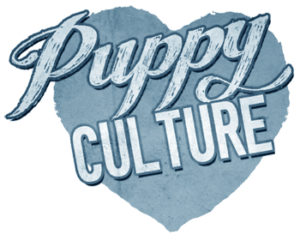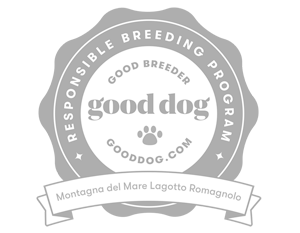By Dana Scott
The topic of spay/neuter is emotionally charged for many pet owners.
It’s become the “responsible” thing to do and we commonly hear of the benefits of this surgery but rarely the risks.
And when savvy pet owners avoid early spay/neuter (or forego it altogether), to mitigate that risk, they’re frequently vilified for contributing to the pet over population problem.But decisions made on emotion aren’t usually the best kinds of decisions we can make.
So indulge me while I take an objective and scientific look at what’s causing all the fuss.
We’ll start with the most recent reason to reconsider spay/neuter.
In February 2014, a study was completed on over 2500 Vizsla dogs and the results were a blow to those who vehemently defend spay/neuter. But this latest study is just the most recent of a long line of work showing that removing a quarter of the dog’s endocrine system might not be in the dog’s best interest–and maybe not even in the best interests of rescues and shelters.
Let’s look at what this research shows as the three most important reasons you should reconsider spay/neuter.
1. Spay/Neuter and Joint Disease
We’ll get to theVizsla study that I mentioned later. They didn’t investigate the link between spay/neuter and joint disease, but they didn’t really need to –there was already plenty of research showing the link.
Hip Dysplasia
A study on Golden Retrievers found that male dogs who were neutered before 12 months of age had double the risk of hip dysplasia than their intact counterparts (Torres de la Riva G, Hart BL, Farver TB, Oberbauer AM, Messam LLM, et al. (2013) Neutering Dogs: Effects on Joint Disorders and Cancers in Golden Retrievers)
Other research shows that dogs sterilized before the age of six months have a 70% increased risk of developing hip dysplasia. The authors of this study (Spain et al, JAVMA 2004), propose that ...
“it is possible that the increase in bone length that results from early-age gonadectomy results in changes in joint conformation, which could lead to a diagnosis of hip dysplasia.”
There’s even more evidence that spay/neuter can increase the risk of hip dysplasia.
Van Hagen et al (Am J Vet Res, Feb 2005), found that of the sample dogs diagnosed with hip dysplasia, those that were neutered six months prior to the diagnosis were nearly twice as likely to develop hip dysplasia.
Interestingly, a study by Dannuccia et al (Calcif Tissue Int, 1986), found that removing the ovaries of Beagles caused increased remodeling of the pelvic bone, which also suggests an increased risk of hip dysplasia with spay.
Cruciate Ligament Tears
Cranial cruciate ligament tears have also been linked to spay/neuter in numerous studies.
The Golden Retriever study found that although there were no cases of cruciate tear in the intact dogs,5% of males neutered before 12 months and 8% of females did suffer tears.
Whitehair et al (JAVMA Oct 1993), found that spayed and neutered dogs of any age were twice as likely to suffer cranial cruciate ligament rupture. Slauterbeck et al also found an increased risk (Clin Orthop Relat Res Dec 2004).
Chris Zinc DVM PhD DACVP explains,
“…if the femur has achieved its genetically determined normal length at eight months when a dog gets spayed or neutered, but the tibia, which normally stops growing at 12 to 14 months of age continues to grow, then an abnormal angle may develop at the stifle. In addition, with the extra growth, the lower leg below the stifle likely becomes heavier (because it is longer), and may cause increased stresses on the cranial cruciate ligament.”
Additionally, sterilization can cause a loss of bone mass (Martin et al,Bone 1987), and obesity (Edney et al, Vet Rec Apr 1986).
Both of these factors could lead to an increased risk of cranial cruciate ligament tear and hip dysplasia.Furthermore, spayed/neutered dogs are greater than three times more likely to suffer from patellar luxation (Vidoni et al, Wien Tierartztl Mschr 2005).
But there areeven more sinister issues with spay/neuter.
2. Spay/Neuter and Cancer
Contrary to popular belief, we can’t spay/neuter cancer and, in fact, this surgery largely increases the risk of many common canine cancers.
MALES vs FEMALES: The Golden Retriever study looked at cancer rates and found that the incidence of lymphosarcoma was three times higher in males neutered before 12 months of age.Interestingly the percentage of hemangiosarcoma in females spayed after 12 months was four times higher than that of intact and even early-spayed females.Additionally, 6% of females spayed after 12 months were affected with mast cell cancer, while there were zero casesamong the intact females.
These results are similar to other studies.The more recent Vizsla study found that spayed females had significantly higher rates of hemangiosarcoma (nine times higher) than intact females.
They also found that spayed/neutered dogs were 3.5% more likely to suffer mast cell cancer and 4.3 times more likely to suffer lymphoma.
(M. Christine Zink, DVM, PhD et al.,Evaluation of the risk and age of onset of cancer and behavioral disordersin gonadectomized Vizslas.JAVMA, Vol 244, No. 3, February 1, 2014)
SPAYED vs INTACT: In fact, the incidence of all cancers in spayed females was 6.5 times higher and in neutered males was 3.6 times higher than intact dogs.
YOUNG DOGS: They also found that the younger the dogs were spayed/neutered, the younger they were when diagnosed with cancer.
Waters et al. (Exploring mechanisms of sex differences in longevity: lifetime ovary exposure and exceptional longevity in dogs) found similar results in their study of female Rottweilers. The researchers set out to determine whether retaining the ovaries contributed to longevity. In Rottweilers, the major causes of death are sarcoma and other cancers, which account for 38% and 73% of deaths respectively.
After excluding all cancer deaths, females who kept their ovaries during the first seven years of life were more than nine times more likely to reach exceptional longevity than females with the shortest ovary exposure.Although intact female dogs were more likely than males to achieve exceptional longevity, that advantage was erased with spay.
3. Spay/Neuter and Behavior
Although spay/neuter had been previously linked to cognitive impairment and even a three fold risk of hypothyroidism, which often creates behavior changes, the Viszla study yielded some particularly interesting insight into this link.
In the study, spayed and neutered dogs were also more likely to develop behavior disorders than intact dogs.
This included:
- fear of storms
- separation anxiety
- fear of noises
- timidity
- excitability
- aggression
- hyperactivity
- fear biting
Another study found neutered dogs were more:
- aggressive
- fearful
- excitable
- less trainable than intact dogs
(Parvene Farhoody @ M. Christine Zink, Behavioral and Physical Effects of Spaying and Neutering Domestic Dogs, May 2010)
This is contrary to the popular belief that neutering reduces aggression and other behavior problems.
There’s Nothing Routine About Spay/Neuter
These findings also present a conundrum for shelters and rescues who advocate spay/neuter.
Although reducing the number of dogs in shelters is an important goal, it’s more important to prevent them from ending up at the shelter. While most people believe that shelters are full because of over population, behavior problems are the most common reason owners give up their dogs.
Moreover, is it fair for shelters to burden adoptive families with the increased risk of cancer and joint disease?
There are alternatives to the complete removal of the reproductive organs and this might play a role in reducing the risk of cancer, joint disease and behavior issues.
Spay is “instant menopause” and immediately shuts off the supply of protective hormones that are obviously involved in much more than just reproduction. Modified spay/neuter surgeries have less impact on the hormones and endocrine system, so dogs will enjoy more protection, even when sterilized.
Hormones produced by the reproductive organs not only are essential for reproduction, but in the development of:
- homeostasis
- body condition
- cholesterol levels
- energy levels
- urinary continence
- muscle tone
- cognition
- behavior
- and, most importantly, they also play a role in the immune system
The rise in the risk of many cancers in response to the removal of the reproductive organs is evidence of this.
OTHER OPTIONS
In females, a partial spay, or ovary-sparing spay or tubal ligation are safer options.
In males, vasectomy can also be a safer option. There is also a zinc injection that has recently come into favor. Hopefully this research will encourage more shelters to look into these safer and less intrusive options.
Finally, if your goal is to give your dog the best chance at a life free of joint disease, cancer and behavior issues, then keeping your dog intact is certainly an option.
If you’re thoughtful and caring enough to get this far in the article, you’re certainly thoughtful enough to manage an intact dog. Simply make certain your intact male isn’t allowed to wander and keep your intact female on leash for a few weeks when she is in estrus.
Removing a significant part of your dog’s endocrine system should be anything but routine. As research continues to show the damning results of spay/neuter, it’s certainly in your dog’s best interests for you to consider these three important reasons to keep your best friend just the way mother nature made him.
The article above can be found at the link below:
http://www.dogsnaturallymagazine.com/three-reasons-to-reconsider-spayneuter
Lagotto Romagnolo – Breed Standard
General Appearance Small to medium-sized dog, well proportioned, powerfully built, of a rustic appearance, with a dense, curly coat of woolly texture. The dog should give the impression that he has the strength and endurance to work all day in difficult and...
The Tail of the Short-Coat
A Breeders Story–by Therese Williams I am generally a well-planned and organized person. I like some order in my life, to some extent anyway. I have always been in management positions, so I must also like to have some degree of control (at least my husband tells me I...
Living with the Lagotto Romagnolo
Hey, what kind of dog is that?” “Thank you for asking, It is a Lagotto Romagnolo.” “A what? I thought it might be some kind of doodle.” These are the daily conversations of anyone that owns a Lagotto Romagnolo. A Little Histoy The Lagotto Romagnolo in fact, is a very...
Lagotto Romagnolo pronounced:
lag-oh-toe roman-yolo
Puppy Culture Program

High-quality
Our puppies are raised in the home, are fed a high-quality diet and we follow the Puppy Culture Program for proper socialization and training.
Endorsements







